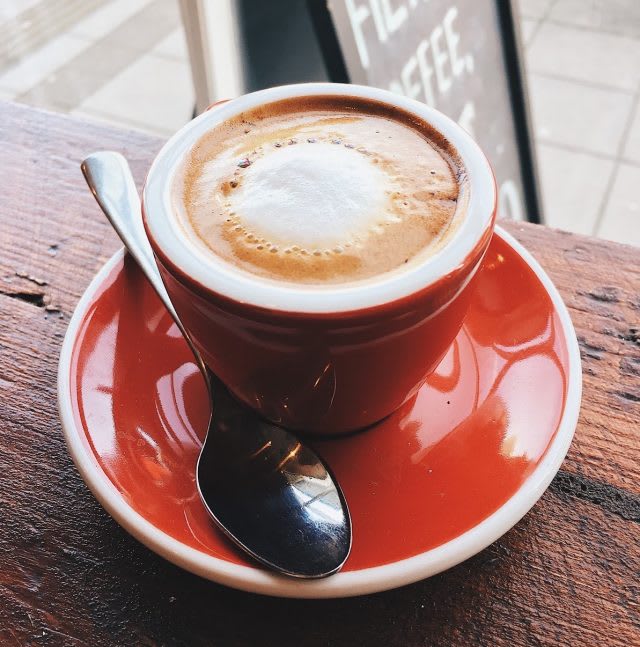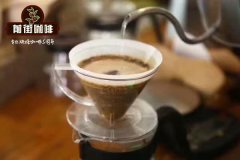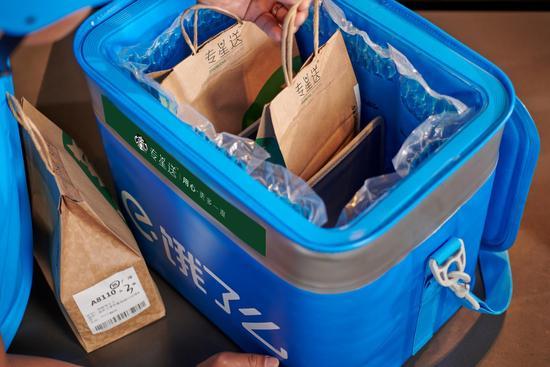Australians love coffee best, not fragrant white? Statistics show that 33% of Australian coffee orders are lattes.

Professional coffee knowledge exchange more coffee bean information please follow the coffee workshop (Wechat official account cafe_style)
According to Chinanews.com, citing Australia, payment platform Square released data on the 12th of this month after analyzing millions of coffee orders from hundreds of Australian cafes, saying that people's favorite coffee is latte.
Australia's top baristas predict that Australia will follow the overseas trend of replacing soybeans and almonds with oatmeal milk as a popular coffee additive in 2019.
33% of coffee orders are lattes.
According to the Herald Sun and the Daily Mail, lattes, cappuccinos and Freshwater still accounted for about 75% of coffee orders in 2018. One out of every three orders in Australia (33 per cent) is a latte, but that is down from 43 per cent two years ago.
By state, lattes are still the most popular in Victoria (42%) and Tasmania (32%). In Kunzhou (26%), Western Australia (37%), Leader Land (39%) and Northern Territory (29%), Freibai is still the first choice for customers in these states. In addition, cappuccino consumption is the highest in NSW, at 26%.
In response to the above data, Caitlin Walsh, a spokeswoman for Square, said that although Victoria's latte consumption has fallen from 49% to 42% compared with last year, it is still the most popular coffee variety. In addition, Victoria Furey white consumption accounts for 17%, cappuccino 14%, black coffee 7%.
Green tea is one of the most popular tea drinks.
At the same time, the data show that Victorians spend an average of 4.18 yuan (Australian dollars, the same below) on a latte, up 9 points from last year. Victorians spend an average of 4.07 yuan (up 8 cents) on a glass of Frappy and 4.05 yuan (up 1 point) on cappuccinos.
In addition, the Square study found that the peak time for customers to buy lattes, Freshwater and cappuccinos was 9 a.m. At the same time, Victoria customers mostly buy (Chinese) tea at 10:00 and Japanese matcha at 3 pm. For tea lovers, green tea, Indian milk tea, matcha, Earl Grey Tea and so on are the most popular.
It is understood that sales of matcha coffee and Indian lattes have increased significantly in the past year, but only account for about 5% of the total sales.
In response, Caitlin Walsh said: "Victorians attach great importance to coffee and its quality." In addition, credit cards have replaced cash as the most common method of payment, with 56% of customers using credit cards instead of change to buy coffee. "there are also more non-dairy options on the coffee menu," Caitlin Walsh said. Soybeans are the most popular choice, followed by almonds, coconuts, Hawaiian nuts and cashew nuts. "
Experts predict that oatmeal milk will be popular
Meanwhile, Australian experts predict a big increase in demand for oatmeal milk as a coffee supplement next year. Tom Gunn, general manager of Proud Mary, a Melbourne cafe, says the biggest change in 2019 is what Australians add to their coffee, not the way they drink it.
"the demand for oatmeal milk will be huge. We also have a cafe in the United States, where oatmeal milk completely dominates the market. " Compared with other milk substitutes, oatmeal milk tastes better, goes better with coffee and bubbles easily. Importantly, it has received financial support from large American companies.
In addition, Pippa Ainsworth, the owner of Darwin Cafe The Trader, said he was surprised that Australians were now lagging behind in the oatmeal milk boom. "I was in London and there was oatmeal milk in every cafe-there was no doubt about it. It may change every few weeks, from cappuccino to hazelnut latte, but they all change together. " (end)
END
Important Notice :
前街咖啡 FrontStreet Coffee has moved to new addredd:
FrontStreet Coffee Address: 315,Donghua East Road,GuangZhou
Tel:020 38364473
- Prev

Yushi UCC Coffee in Japan has set up a factory in Taiwan and introduced a self-developed roaster.
Professional coffee knowledge exchange more coffee bean information Please follow Coffee Workshop (Wechat official account cafe_style) Japanese coffee manufacturer UCC Youshi Coffee Co., Ltd. has invested NT $500 million to set up a factory in Yunlin Dou-6 Industrial Zone to introduce an independently developed roaster "AROMASTER", which will be completed today and put into operation in January next year, which is expected to bring about a trend in the coffee market. Well-known Japanese coffee manufacturer
- Next

2018 China Coffee Market Analysis report: the share of self-service coffee machines and take-away coffee in the coffee market
Professional coffee knowledge exchange more coffee bean information Please follow the coffee workshop (Wechat official account cafe_style) the rapid expansion of China's coffee market has attracted capital from all sides. Self-service coffee machines and takeaway coffee are the most popular in the capital market. China's coffee market is rapidly expanding. 2018 coffee capital market statistics show that China's coffee consumption has increased in recent years.
Related
- Law Enforcement Bureau? Mixue Ice City enters Zhengzhou BRT platform!
- Heavy! Nestlé has been exposed to consider selling blue bottle coffee!
- Compensation of 270 million yuan! Starbucks has been charged with violating labor laws more than 500,000 times!
- What are Xizhao coffee beans? Why did they become champion beans? How to rush to the manor on the dividing line in Colombia?
- What does channel effect mean in coffee? Why are there holes in the coffee powder cake?
- How much do you add to the milk for latte, Australian white and cappuccino? What is the ratio of coffee to milk between latte and frill?
- What is the cause of coffee astringency? Why does the brewed coffee feel astringent?
- The industry is heavy! Lucky will open its first store in Taiwan in December?!
- Unbelievable! Does one person at Starbucks wear a tiger head set and hold a mace to order?!
- Return to the way you came from?! Some cities in Mixue Ice City are selling breakfast!

